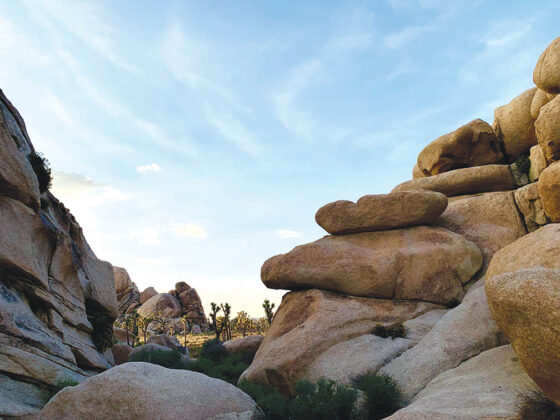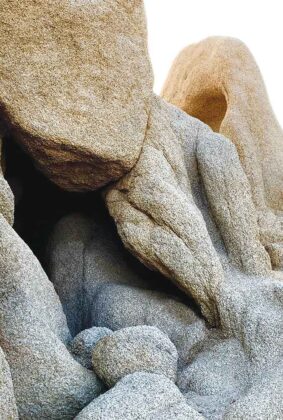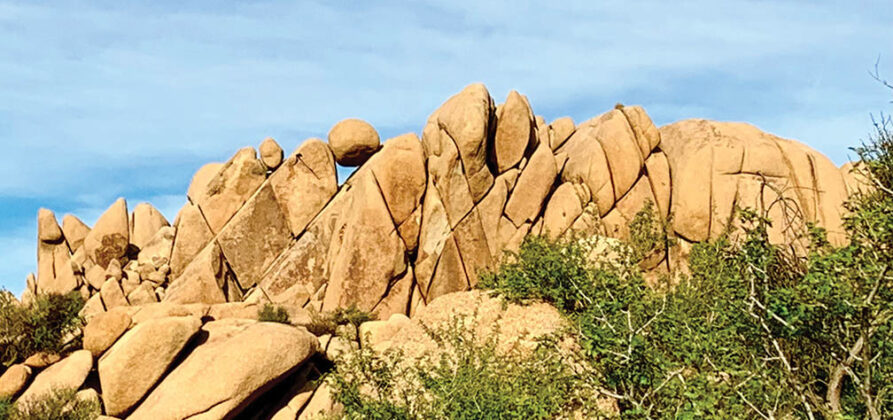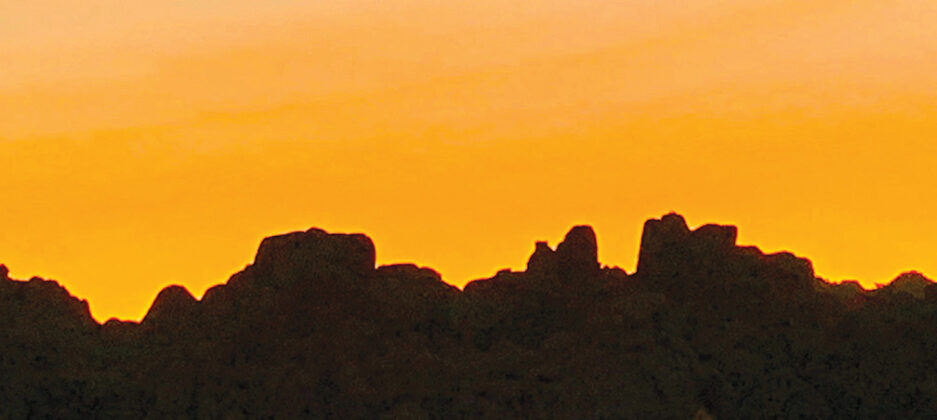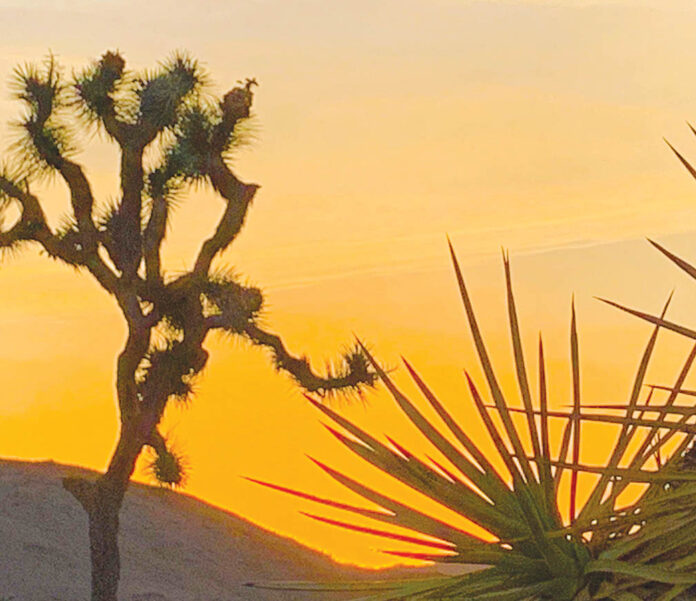
Nathalie Taylor
Special to Valley News
While exploring Joshua Tree National Park with a discerning eye and a quiet demeanor…another world unfolds. This world – detached and remote from our present-day world, is a dramatic wilderness where visitors are enveloped by natural wonders.
Spiky-tipped Joshua trees and curious granite rock formations create a picturesque segue from our hectic world to the peaceful natural world. Each rock formation is distinctive – unique as snowflakes. Aim your camera at any of the park’s natural wonders and you are bound to get an interesting photograph.
Joshua trees with gnarled trunks and spiked leaves are abundant. They are bastions of longevity, living approximately 200 years. However, some are even older – estimated to be 1,000 years old.
The Joshua trees alive today are not old enough to have lived when the people of the Pinto Culture inhabited the area. Archeological evidence, including arrowheads and other tools, tell of a tribe of hunter-gatherers, who were later dubbed the Pinto Culture.
The tribe inhabited the park’s Pinto Basin at least 8,000 years ago. Information on the Pintos can be found at the Cottonwood Visitor Center, which is fairly close to the south entrance.
The Mojave yucca is also indigenous to the area. At first, it was difficult for me to discern the difference between yucca and the Joshua trees because they both have green spiny-tipped leaves.
However, the mystery was solved by an informative sign. Mojave yucca plants have hair-like fibers peeling from the edges of the leaf blades. The Joshua tree leaves are free of fibers.
Cholla cacti are abundant in certain areas of the park. These cacti appear deceptively fuzzy and approachable, however, do not be fooled. Their spines are loosely attached; and seem to jump out if a pers
On one of our family trips, my brother came too close to a cholla cactus, and some of the barbed spines “jumped” out at him. It was initially quite painful, and, although my mother tried to remove all of the barbs, it took him quite a while to recover from the cactus pricks.
As the car ascended from sea level to about 4,400 ft, the climb was so gradual, it was not even noticeable. The vast desert landscape changes slightly at each turn of the narrow park roadways. Two ecosystems meet in Joshua Tree National Park – the cooler, higher altitude Mojave Desert, and the warmer, lower altitude Colorado Desert.
It’s 5:30 p.m. and the sun is still strong. A canopy of blue is above me – clear blue with no trace of clouds. The dramatic landscape – unfenced – with a view stretching to the horizon; generates a sense of freedom. Time is not relevant. It could be thousands of years ago, or the present moment.
While hiking the Cap Rock Nature Trail, a loop pathway less than a mile in distance, the journey is enhanced by the chatter of unnamed small birds gathering on the caps of boulders. The rock wrens add their cheery songs, and the symphony, carried on the wind, is enchanting.
A lone turkey vulture, with a black-feathered torso, and an approximate six-foot wingspan, gracefully soars above the tallest rock towers. The wings of the vulture are a blend of black and silvery grey.
As I pause to sit on a rounded boulder, a gust of wind echoes in my ears. The wind subsides to a whisper…then…it is quiet. No wind or bird songs. It didn’t take long to feel I was the only person on earth. The desert, studded with boulder monuments and Joshua trees, stretches to the distant mountains.
Granite boulders of various shapes and sizes line the trail ahead of me. In jigsaw fashion, melding artistically, boulders are layered upon boulders. Some boulders teeter precariously on each other in a mystifying manner. In the waning daylight, shadows accentuate rock crevices and the narrow cracks between boulders.
It is now twilight – a spectacular time at the park. It’s a time to linger. From my boulder perch, I observe gnarled Joshua trees with their spiky branches silhouetted against a vivid orange horizon. An uninterrupted line of jagged boulders joins the parade of silhouettes.
When darkness finally consumes the twilight, another spectacular sky emerges. The stars that sweep across the night sky are brilliant. In fact, due to the glorious skies, Joshua Tree National Park has been designated an International Dark Sky Park.
As my friend, Mark, describes it, “The sky is especially beautiful at night. The stars are magnificent. The entire Milky Way is rolled out above you like a tapestry.”
In Joshua Tree National Park, an otherworldly aura pervades. The park is inspiring, yet tranquil. It outshines anything created by human hands.
Visitors need to bring water and food, as these items are not available in the park. Please keep in mind that the summer temperatures will climb to over 100 degrees; and cell service is almost non-existent. Maps are a necessity, and can be found at the visitor center. However, maps and other information can also be accessed online at https://www.nps.gov/jotr/index.htm.


